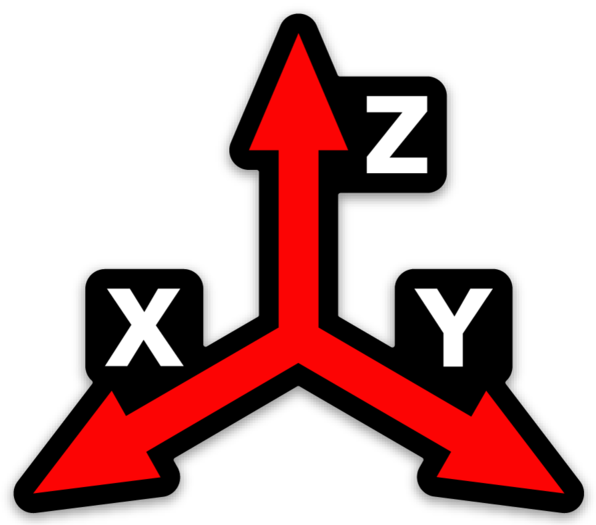Linear Momentum
Linear momentum is the product of mass and velocity. When you analyze the linear momentum of the various segments of a good player—and how those values relate to each other—you get what might be a very different understanding than you currently have about the swing.
For example, let’s look at this tour player at impact hitting a driver in the image on the right.
You’re seeing him as if you were standing down range, looking back as he hit balls at you. The arrows you see here denote the linear momentum of each segment of the body’s mass centers. We’re going to focus on the blue one coming from the left hand, the red one coming from the right hand, the green one coming from the club and the large black one coming from the player’s overall composite mass center.
What you can see here is that the linear momentum of the club’s mass center clearly denotes that it is curving —not moving straight toward the target. You can also see that each hand has an even bigger directional change as displayed by each arrow. This means that when you try to “swing down the target line,” you’re doing something contrary to what the club was designed for. Similarly, the overall linear momentum of the player—the black line—is moving up and back, not toward the viewer down range.
Two other interesting things to note?
The linear momentum of the right hand is slightly greater than the left hand, which means the right hand has more velocity assuming they have the same mass. Velocity is more than just speed, it also includes changes of direction.
The linear momentum of the right upper arm is in a different direction than the left upper arm.
There is a lot to this, let’s start with this video discussion:


